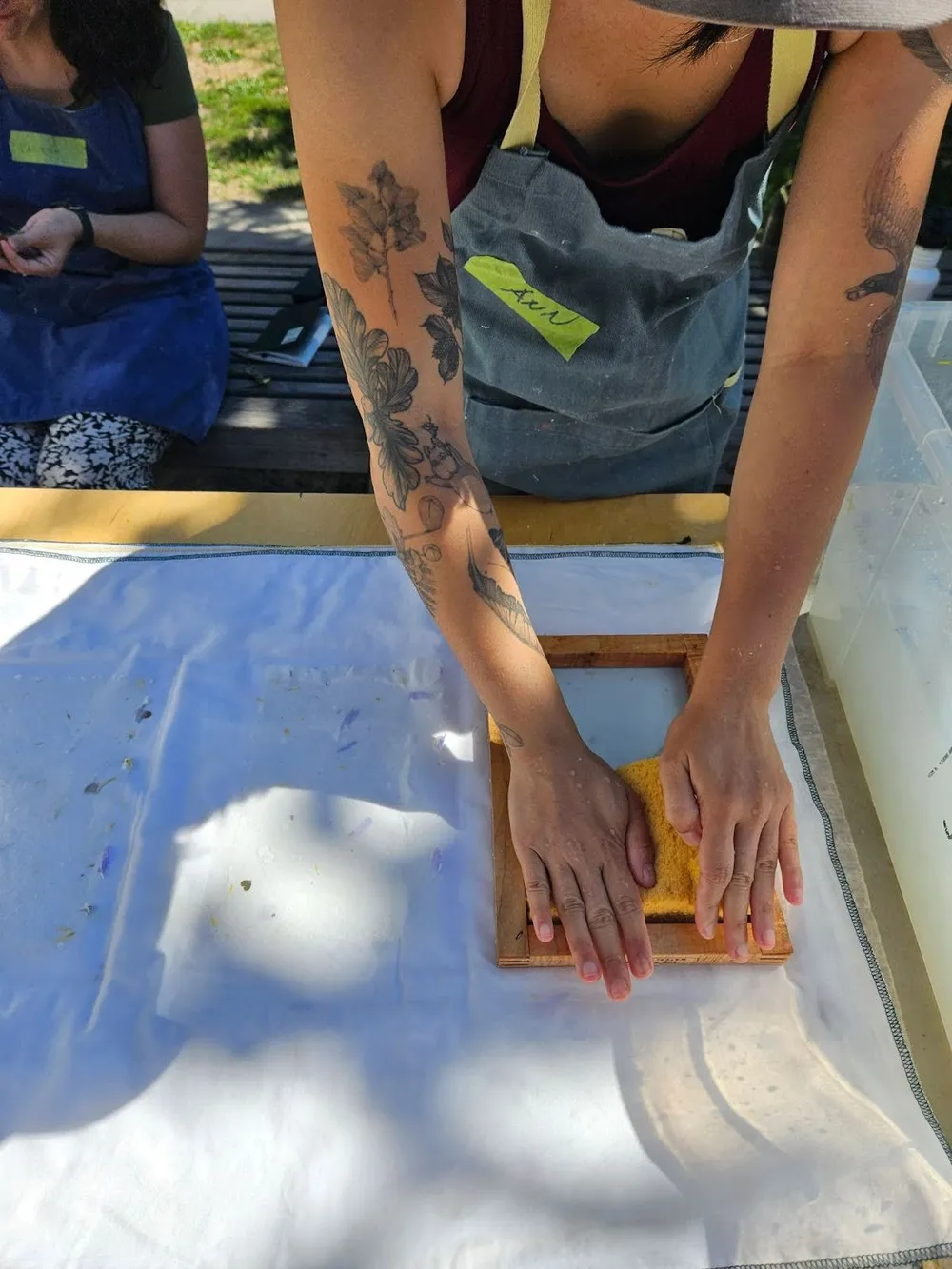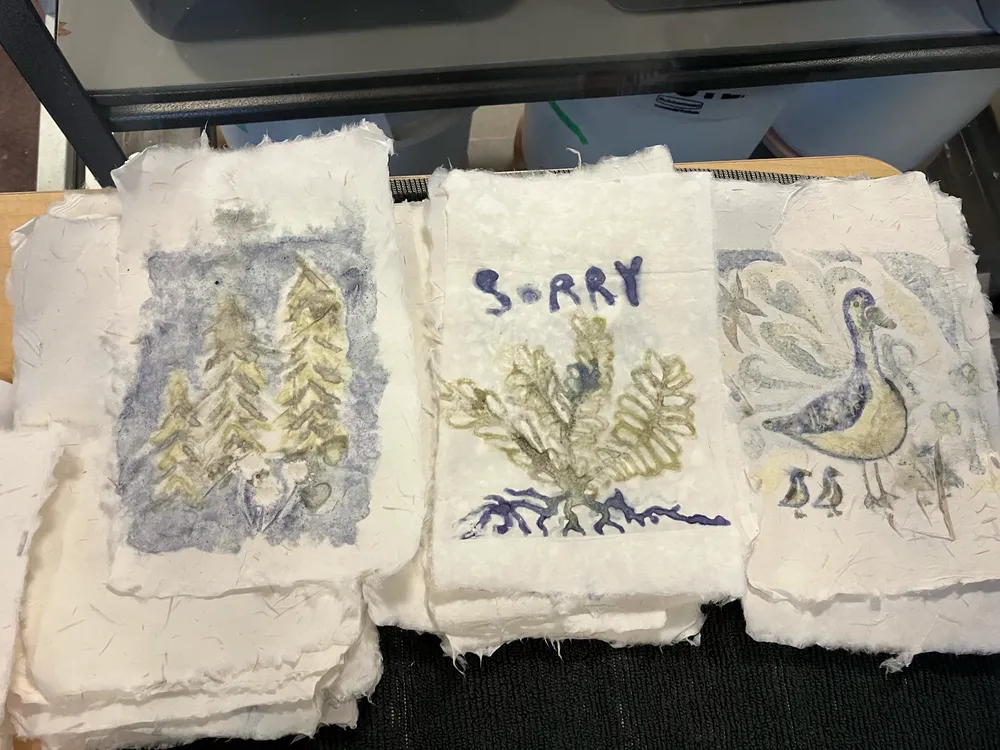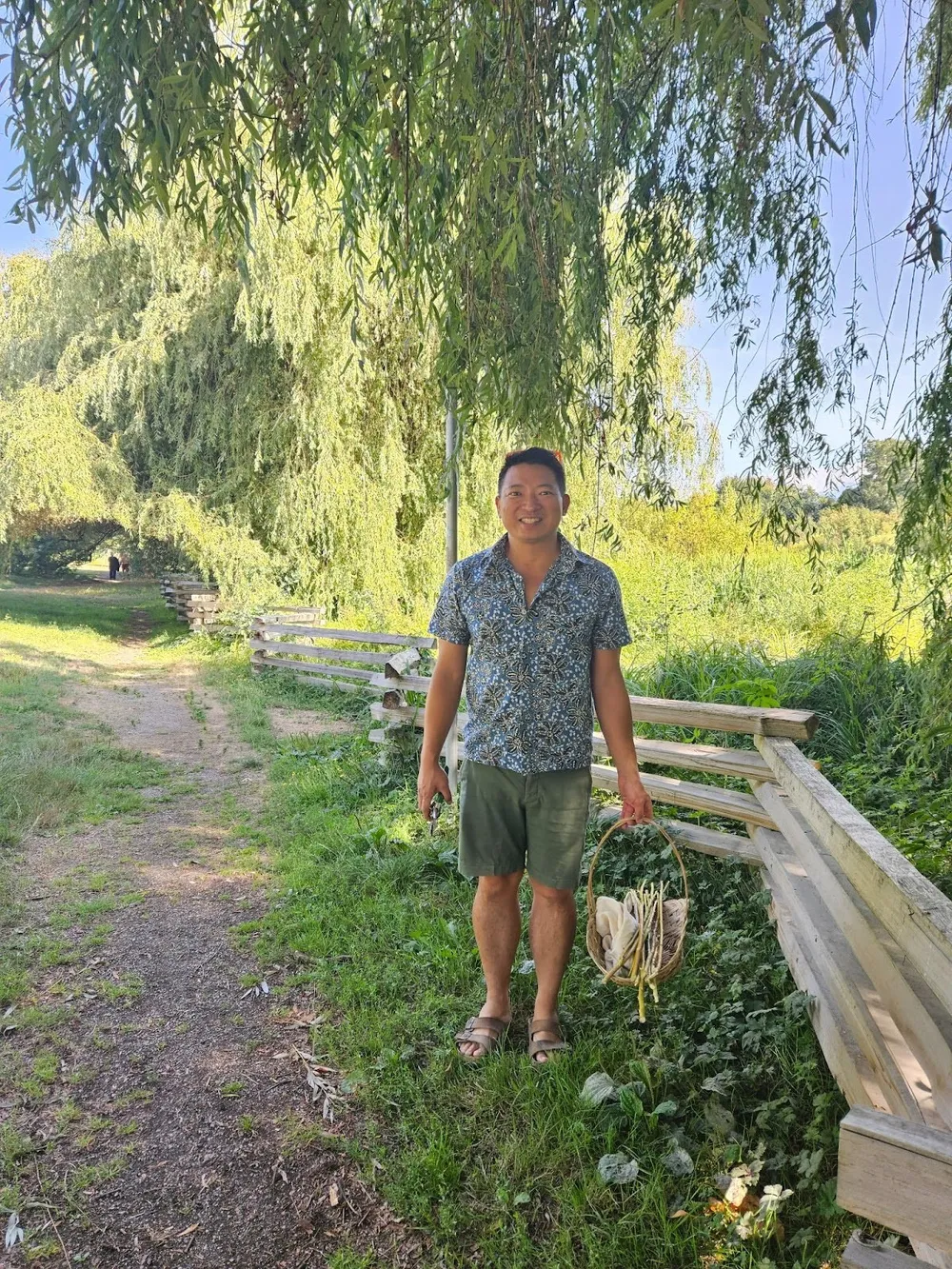Through the window of the Trout Lake Community Centre, the lake’s mirrored surface reflected back the silhouettes of willow trees in the brilliant winter sunlight. Inside, artist-in-residence Ed Fu-Chen Juan carefully fed a piece of handmade paper made from those same willow trees through a printing press. He lifted up the paper with a careful flourish, revealing a navy-blue outline of a duck.
The duck went in a pile of other prints made by the families, students and other community centre visitors who dropped in to his free printmaking workshop on November 24.
Juan is a Taiwanese Canadian printmaker and 2023 Trout Lake Community Centre artist-in-residence. He’s collaging prints created by the community into a sculpture of the abundant ecosystem Trout Lake used to be — before the city cut it off from the streams that fed it.
In summer and fall, he ran free workshops on harvesting local plants to make paper and ink. While ideally the water for the ink would be from the lake too, Juan said that you need clean water for that. Trout Lake, clogged with duck poop and algae, is anything but.
The project uses public art to connect people to the lake’s natural history and uncertain future. To Juan, that means “working with ecologists and Indigenous elders and also researching the health and history of the lake and the region.” His sculpture will go up on December 17 as a permanent installation, designed to remind people of the checkered history of the lake, but also how it is theirs to shape.
Trout Lake used to be a peat bog, much like the one in Pacific Spirit Park, fed by four creeks. Salmon and trout migrated through its waters, and settlers used the lake as the city’s first freshwater source.
In the 1930s, China Creek, which used to flow from Trout Lake to False Creek, became increasingly polluted by sewage, construction waste and stormwater. The city diverted it into an underground pipe in 1951.
The bog became a lake, but without water flowing in or out, it stagnated with duck poop and bloomed with hazardous bacteria. The city infuses the lake with chlorinated drinking water every summer as a temporary solution, but it’s a bandaid on a water system cut off from its natural ability to self-regulate.
Juan’s sculpture depicts the streams as “the arteries of the lake … symbolism of the beating heart of the city,” he said. Without their healthy waterways, cities quickly become choked by their own waste and deprived of the natural beauty that so many residents value — and which the host nations hold sacred.
The streams that brought clean water, salmon, and other life to Trout Lake aren’t gone though — just buried. A city council proposal in 2019 recommended "daylighting" and restoring streams like China Creek by bringing them back to the surface.
This proposal would create a blueway connecting False Creek with the Fraser River, which could improve biodiversity, restore salmon runs and make the water clean and safe again.
Of course, ripping up streets to bring historic streams back to the surface is slow and expensive. Juan acknowledges that Trout Lake will may never be the same as it once was.
Still, while historic urban planning decisions destroyed the bog, there’s hope for the lake.
“The community do(es) love this park,” said Juan. “They want to be involved.”
Most of the city park restoration work, from picking up trash to counting birds, is done by hundreds of volunteers. But, Juan said that most people lack access to spaces where decisions about parks are made — from community centre administration to the contested Vancouver Parks Board.
The project isn’t just about engaging people in urban nature — it’s about the power they have to shape their parks to represent them. Collaborative public art like Juan’s sculpture is one way to claim space.
Juan intends his piece to recognize the people who care for the park because they live nearby, take classes at the community centre and walk their dogs on its banks every morning.
He knows them because he’s one of them. Juan is part of the community centre pottery club and works out at the Trout Lake gym, which informed his decision to apply to the residency.
“This is a great opportunity to work with the community I’d already grown to know,” he said.
At the printmaking workshop, a group of women from the pottery club took a break from running their holiday ceramics sale to put ink to paper and chat.
“Ed roped us all into this,” one said. She layered purple ink (made from native salal berries) onto a plastic sheet, which the press later transfers onto paper.
When the pieces emerged from the printing press, some showed clear outlines of leaves and spirals, while others emerged as blue smudges. Juan said that it can be hard to get colour definition with experimental natural inks — “They’re made from plants; you don’t get a choice.”
Restoration work requires understanding that some ecological processes work outside our control. There are no quick fixes on decades-old damage. Rather, it’s a slow process of repair that starts with people learning about the places around them.
“I'm just seeing myself as more of a guide or student, and the public [does the] stewardship of the park and the land,” said Juan.
Share this article
First online








